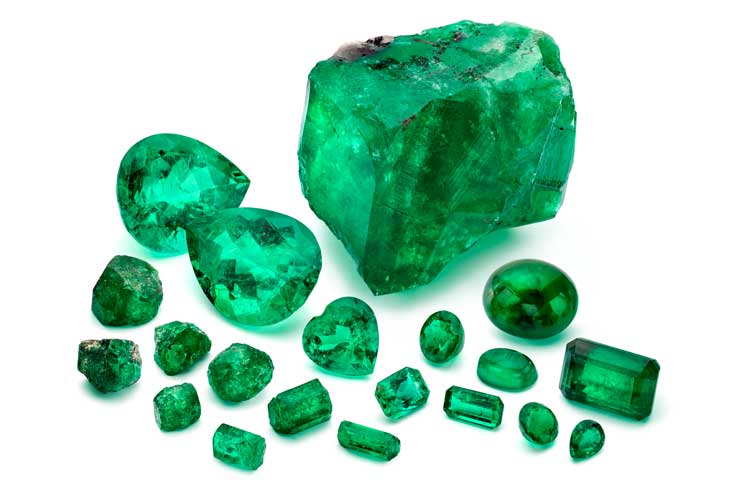
Emerald - May Birthstone
18.05.17
Who first beholds the light of day
In spring's sweet, flower month of May
And wears an Emerald all her life
Shall be a loved and a loving wife.
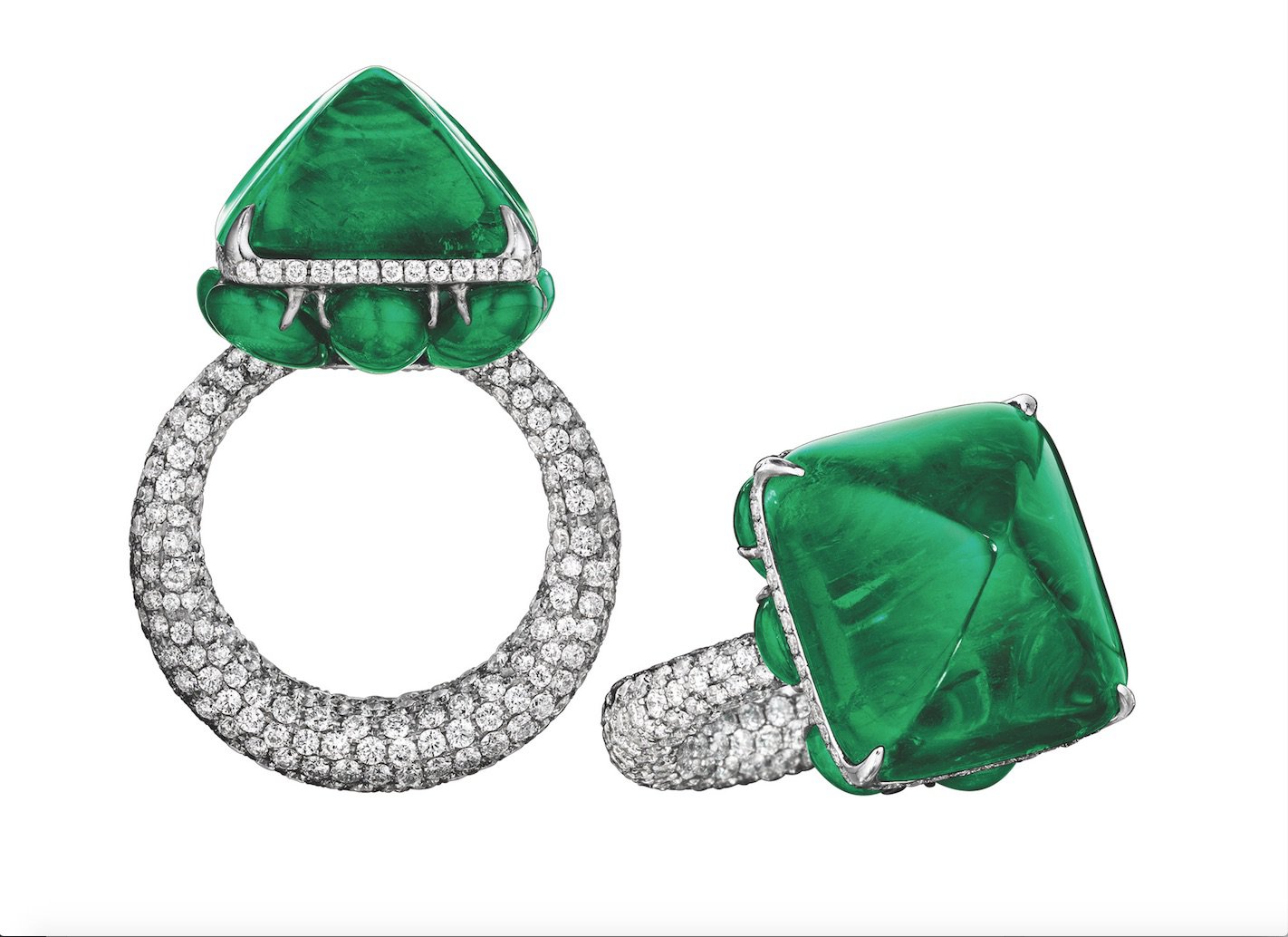
Striking cocktail ring by Jacob & Co features cabochon-cut Colombian emeralds and brilliant-cut diamonds set in 18-carat white gold
March winds and April showers bring forth May flowers! As the last month of Spring is well known for its warm embrace of the sunshine and fresh greenery, emerald is the perfect gem to symbolise and celebrate this month.
Emerald is a rare variety of mineral Beryl, which forms in granite and pegmatite rocks, growing long hexagonal shaped prisms.
It is highly prized for the rich green tones, caused by vanadium and chromium atoms in a crystal structure, making the more intense coloured stones score very high prices on the market. It is one of the most popular gemstones, favoured by the royals and famous people, dazzling on the red carpet events and front covers of magazines. We see quite a wide vareity of emeralds at the IGR London lab.
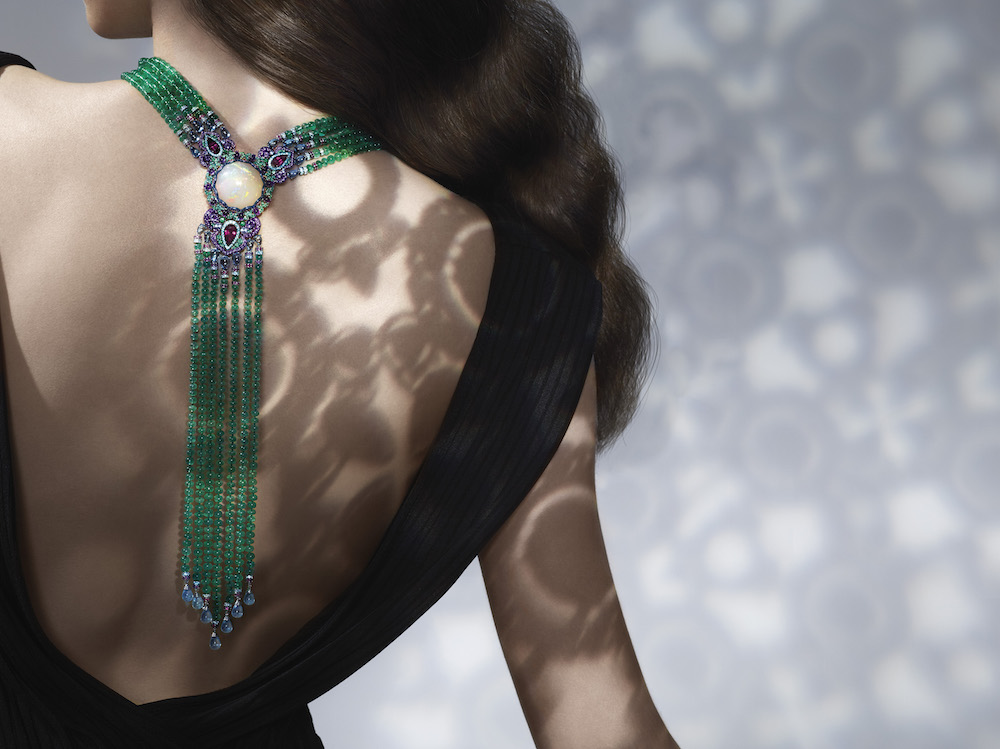
Nature-inspired necklace from Chopard’s Red Carpet collection features as many as 413 carats of emerald beads.
Cleopatra is perhaps the most famous historical figure to cherish emeralds. During her reign, she even claimed the ownership of all emerald mines in Egypt. The hot green stone was believed to be a symbol of youth and possessed many mystical and healing powers. The stone was widely used in jewellery as well as different rituals, as burials, often burying emeralds with monarchs for protection.
Emeralds occur and mined in many countries across the world, predominantly in Colombia, Siberia, India, South Africa, Zambia and Brazil. Among all the countries, Colombian emeralds are considered to be better in quality with the desired forest green tones. In fact, until recently, Colombia was the only source and remains the dominant producer of a rare variety of Emerald, called the Trapiche Emerald. The unique design present in Trapiche emerald looks of the grinding wheel, with radiating six-pointed star effect, caused by the host rock pushed towards the centre of the crystal under the specific hydrothermal conditions.

A Trapiche emerald we had in the IGR London lab for a gem report
The stones from different localities display various properties like alternative hues and tones of the body colour and clarity characters, influencing the price and popularity of particular origins. For example, the combination of gas, liquid and solid particles known as three-phase inclusion are more common in Colombian emeralds. The usual inclusions in this gemstone are crystals of calcite, mica flakes, pyrite, needles, feathers and two-phase particles. Unlike diamonds, the most sought after emeralds should have some inclusions and the fiery forest green hue.
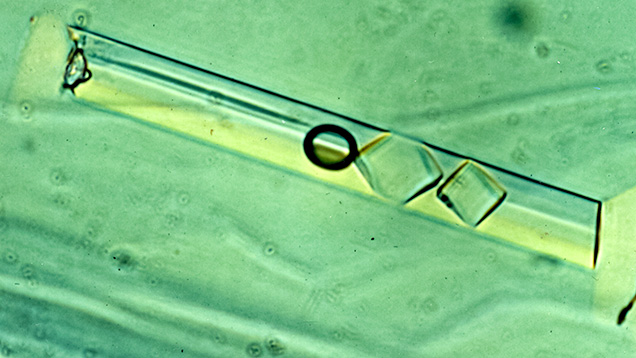 Three-phase inclusion of liquid, solid and gas particles
Three-phase inclusion of liquid, solid and gas particles
As the member of Beryl family, Emerald accounts 7.5 on the Mohs scale of hardness. The gemstone is brittle and should be dealt with care during handling and setting. To overcome before-mentioned flaws, gemmologists invented the special cut, known as the emerald cut. Later, this shape has been practised with all gemstones; it enhances the richness of coloured stones. The large table and deep pavilion prominent in an emerald-cut stone draw the light and the eye inward, deepening and intensifying the colour to mesmerising effect.
Several treatments are performed on emeralds to enhance its clarity, one of them is oiling. This treatment allows to fill internal fractures using the various substances, but cedar oil is more common as it is similar in RI and considered eco-friendly. It is very hard to detect the oil, however, the microscopic examination may reveal interference colours in the fractures. Oiling regarded as not a stable treatment, leading to a possibility of repeating the process.
An alternative method is called fracture filling, where the stone is filled with the substance called polymer. It is hard to detect them. However, the coloured flashes of light can be seen when the stone is rotated. The flashes can be of any colour depeding on the filling, but yellow, orange and blue lights are more common.
Dyeing is a well-known process to alter the colour of the gem. Unlike other treatments, this one is quite easy to identify because of the concentrations of the dye in cracks in the material.
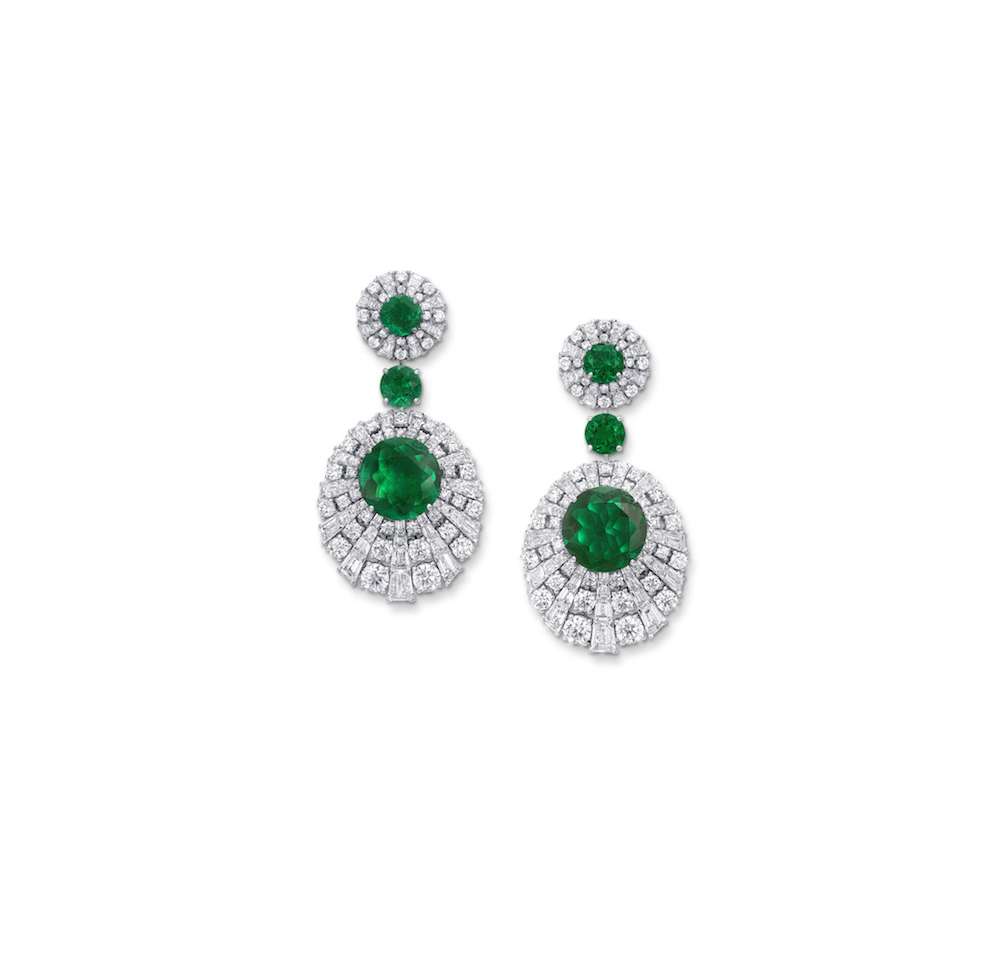
These magnificent earrings by Graff feature 31.63 carats Columbian emeralds and diamonds weighing 28.80 carats
Remember not every green is an emerald, read the IGR London post on simulants here
Today, emerald is a symbol of loyalty, new beginnings, good fortune, youth, peace and security, making it not only a beautiful gem to wear, but also a meaningful gift to be treasured by the receiver.




